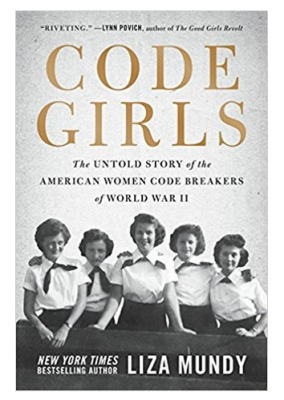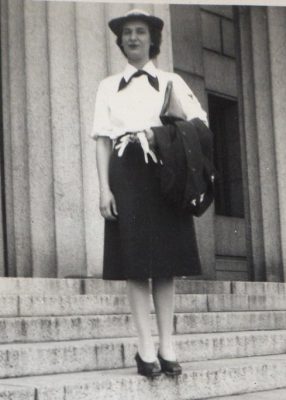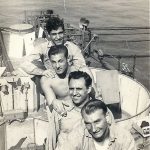Code Girls – Liza Mundy

I’m familiar with the wonderful writing of journalist and author Liza Mundy. A long time resident of Arlington, VA, she attended North Cross School in Roanoke, VA, before going on to earn degrees at both Princeton University and the University of Virginia. She is a talented writer who brings to life this amazing story of the thousands of women who helped the Allies win in World War II.
My aunts, Maggie Catasca and Madeline Catasca, left their home in Roanoke to join the war effort as well. Aunt Maggie was a WAVE and Aunt Madeline had a civilian job and they shared an apartment in Arlington, VA, along with another roommate. My Aunt Mary Jane recalls that she and my mother went up to visit them over the summers while they were there. I recalled that my mother told me Madeline had worked on the code team that decoded the Japanese surrender. When I asked her daughter, my cousin Maggie, what her mother did during the war, she responded, “She never talked about what she did in the war. Neither did my father. I think it was secretarial.”
All the women who worked on code breaking teams were sworn to secrecy. Even roommates did not talk about their work with each other. And ALL OF THEM were told to say they did secretarial work.

And they were sworn to secrecy. Which may account for why the children and grandchildren, parents and siblings of these 11,000 women had no idea what they did in the war. This story NEEDS to be told! The comparison to Hidden Figures is justified – why did it take decades for these stories to be told? There is a whole generation of girls who grew up with no idea that women were mathematicians, scientists, technology pioneers . . . and war heroes.
In 1942, only about 4 percent of American women had completed four years of college. Both the Navy and the Army recruited these young women right out of their college classrooms in a highly secretive mission where they themselves were not certain of what they had signed up for. They next set their sights on recruiting school teachers from all over the country, as they too showed an aptitude for code breaking work. But as the war progressed and more and more women came to Washington and Arlington, they discovered there was no way to really predict who would be good at this type of work.
Administrators were finding to their chagrin that there often was not a correlation between a person’s background and how well that person would do at breaking codes. Some PhDs were hopeless, and some high school dropouts were naturals. There was a stage actress who was working out wonderfully, as was a woman with little formal education who had been a star member of the American Cryptogram Association, a membership group for puzzle and cipher enthusiasts. Code breaking required literacy, numeracy, care, creativity, painstaking attention to detail, a good memory, and a willingness to hazard guesses. It required a tolerance for drudgery and a boundless reserve of energy and optimism. A reliable aptitude test had yet to be developed.
The research here is excellent and captivating. The personal stories of these women really shine a light on what it was like to live and work in such an intense time where the lives of their husbands and brothers hinged on how well they could do this work. Liza Mundy did extensive interviews with Dorothy Braden Bruce, a native of Lynchburg, VA, and a long time resident of Richmond, VA. Dot saved the many letters that were sent and received while her future husband, Jim Bruce, was overseas and that contemporaneous account of that era is priceless.
